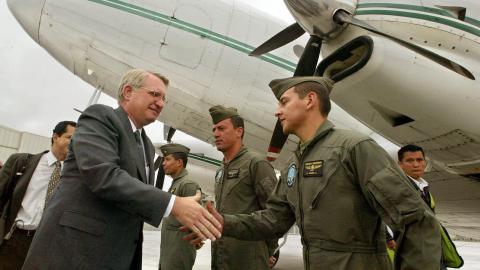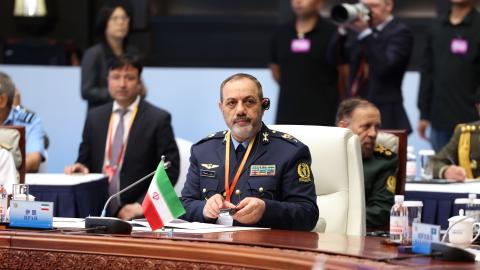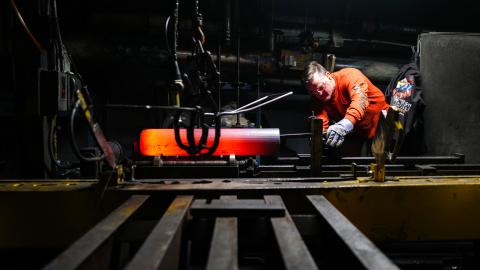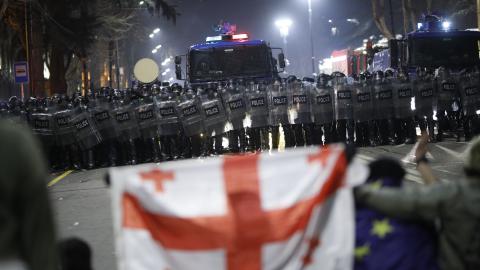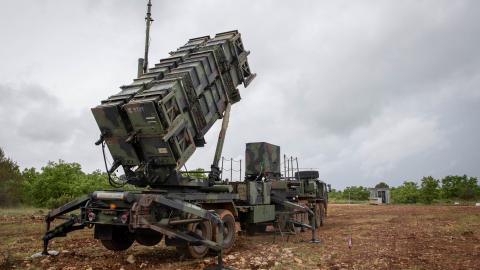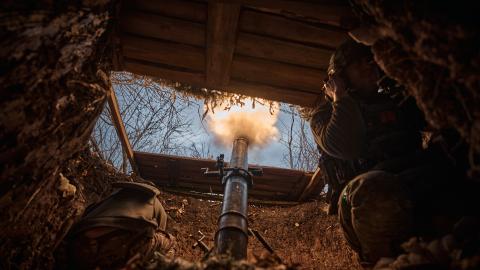Below Senior Fellow Can Kasapoğlu offers a military situation report about the war in Ukraine.
Executive Summary
• The Kremlin, with help from North Korea, has staged a major push to recapture the Russian region of Kursk from Ukraine.
• Russia and Ukraine exchanged record-setting drone salvos.
• The Russian military might be preparing to launch a large-scale offensive in Ukraine’s south.
1. North Korea and Russia Launch a Large-Scale Offensive in Kursk
Augmented by 10,000 North Korean servicemen, the Russian military has amassed 50,000 troops for a large-scale counteroffensive to reclaim the Russian region of Kursk from Ukrainian forces. Open-source intelligence suggests that the campaign has already begun—at an overwhelming operational tempo.
According to Ukrainian officials, the North Korean contingent, divided into an assault detachment and a group of supporting forces, is engaged in combat operations. Ukrainian President Volodymyr Zelenskyy and Defense Minister Rustem Umerov have stated that Pyongyang’s troops have already suffered casualties.
Ukrainian intelligence has also determined that at least three high-ranking North Korean generals have combat deployed to oversee Pyongyang’s movements in the field. The most senior figure in the group is General Kim Yong Bok. Kim is the vice chief of the Korean People’s Army (KPA) General Staff, the commander of Pyongyang’s special forces, a military advisor to Kim Jong Un, and a member of the Korean Workers’ Party (KWP) Central Committee.
Russia’s Kursk offensive features a noteworthy composition of forces. Naval infantry formations, particularly the 810th and 155th Brigades, are leading the offensive action to break Ukrainian lines. Social media reports have highlighted the involvement of the Russian Airborne Forces (VDV) in the effort. Russia’s defense industry has equipped the Kremlin’s marines with newly produced BTR-82 armored personnel carriers (APCs) to provide the units with protection, operational flexibility, speed, and mobility. Despite these advancements, Ukraine’s heavy detachments, such as the 47th Mechanized Brigade and the 95th Air Assault Brigade, have so far demonstrated remarkable resilience, holding their ground and inflicting damage on the Russian formations.
Ukraine’s accumulated gains in Kursk have significant strategic implications and provide Kyiv with considerable diplomatic leverage. If United States President-elect Donald Trump seeks to impose a ceasefire and bring Russia and Ukraine to the negotiating table, Kyiv will be able to use the Russian territory it holds as a bargaining chip. The Kremlin is working to expel Ukrainian forces from Kursk to deprive Kyiv of this leverage before the new US administration takes office.
2. Russian and Ukrainian Forces Exchange Massive Drone Barrages
During the night of November 9, the Russian military launched a loitering munition salvo against multiple Ukrainian cities, including Zhytomyr, Odesa, Kyiv, Sumy, Poltava, and Zaporizhzhia. The Kremlin launched 145 Iranian Shahed drone warfare systems from multiple sites including occupied Crimea. Ukraine’s air defenses intercepted only 62 of these drones.
The strike, like many of the Kremlin’s prior attacks, risked significant collateral damage: some Russian drones wandered off their flight paths into Belarus and Moldova. In a previous strike, Russian loitering munitions hit the Estonian ambassador to Kyiv’s apartment building. The surge in Shahed attacks suggests that Russia and Iran’s joint drone manufacturing plant has further increased its production capacity.
Kyiv answered the Kremlin’s salvo on November 10 with its largest drone strike since the beginning of the war. Russian air defense crews engaged 70 Ukrainian drones, 34 of which were targeting Moscow. Ukraine’s strike halted operations at the Domodedovo, Sheremetyevo, and Zhukovsky airports in Moscow, severely disrupting Russian air traffic.
The war between Russia and Ukraine has served as both a proving ground and an innovation incubator for armed drones, yielding new technologies, weapons systems, and concepts of operations (CONOPS) in the realm of unmanned systems.
3. Battlefield Assessment
The Russian military has sought to capitalize on its offensive momentum by making a concerted push on the southern Donetsk front. Despite record-high personnel losses, Moscow’s forces have gained territory after seizing Vuhledar in October of this year. After the reported fall of Selydove, Russia’s next objective is the important logistics hub of Pokrovsk.
Russian forces have also heightened their offensive activity in Kurakhove. A critical dam was recently destroyed, likely by Russian forces, which will exacerbate flooding in the area. The Ukrainian 46th Brigade is manning the defensive line in the face of growing Russian pressure.
The Ukrainian General Staff has also detected heightened Russian military preparations in southern Ukraine, suggesting a large-scale Russian push that could threaten Zaporizhzhia. This effort, combined with ongoing Russian pressure in the east and counteroffensive operations in Kursk, could stretch Ukraine’s military even further. Kyiv is in danger of suffering drastic setbacks on the battlefield unless it can initiate changes with the help of its allies.


